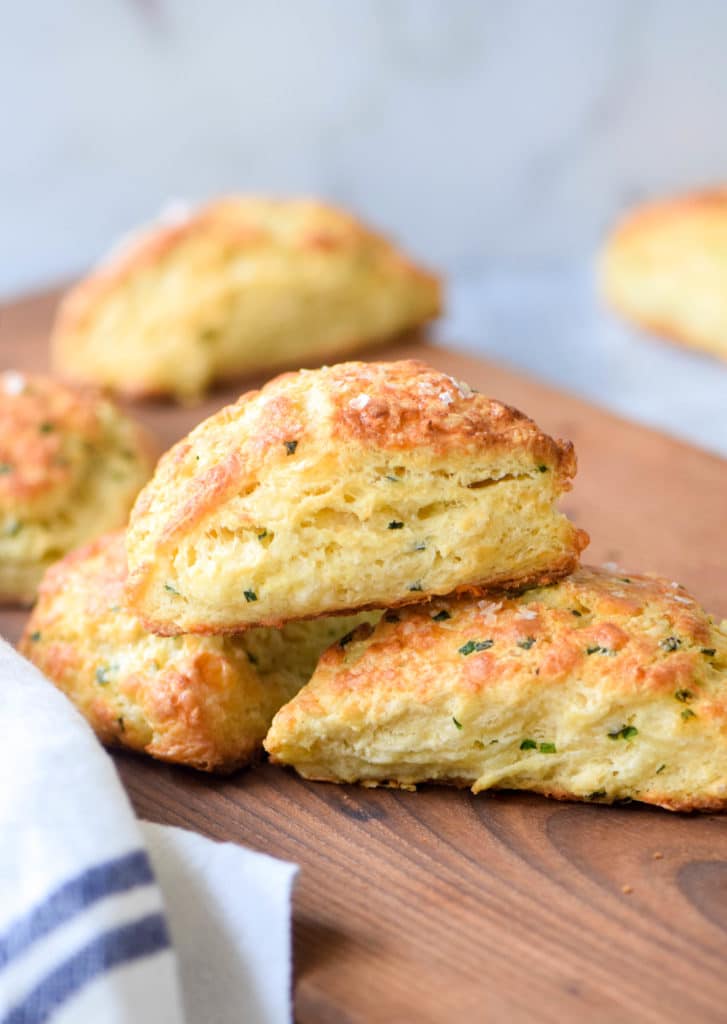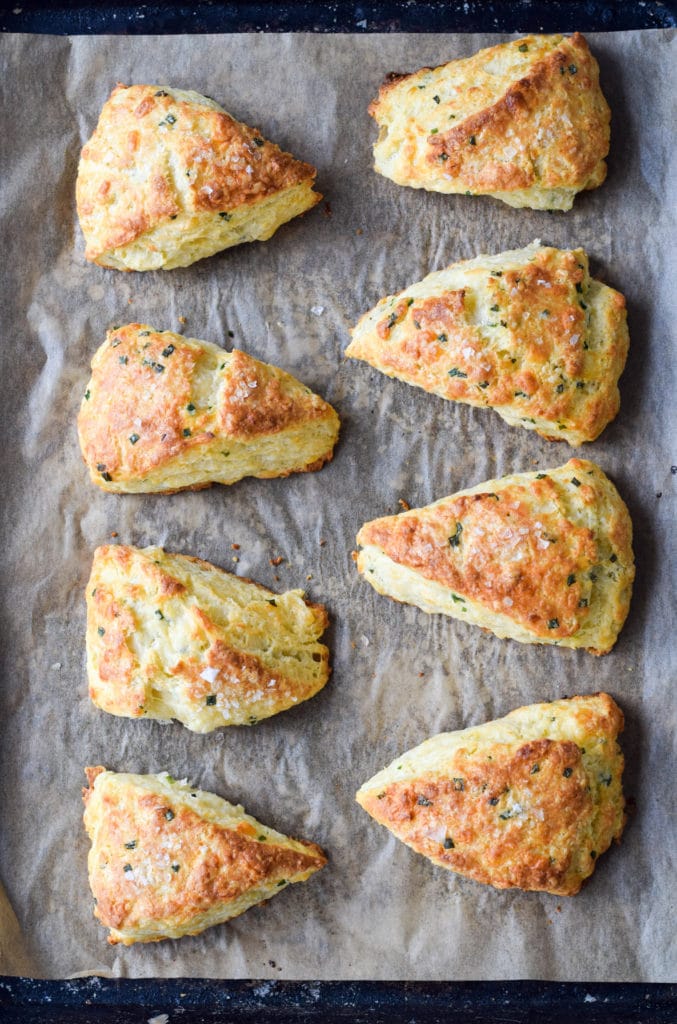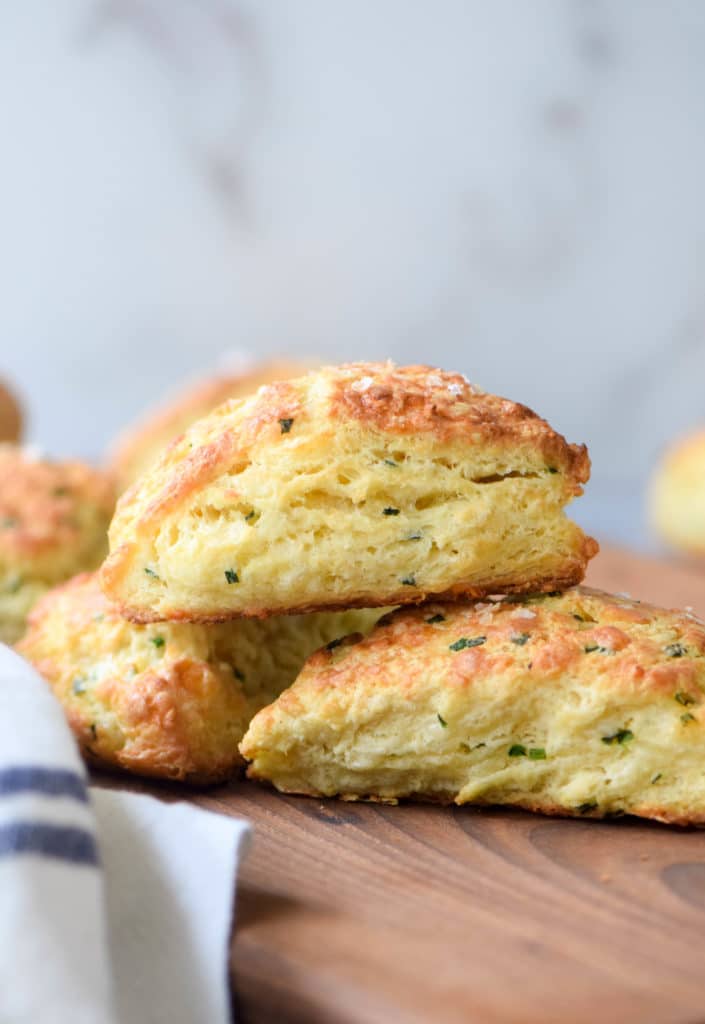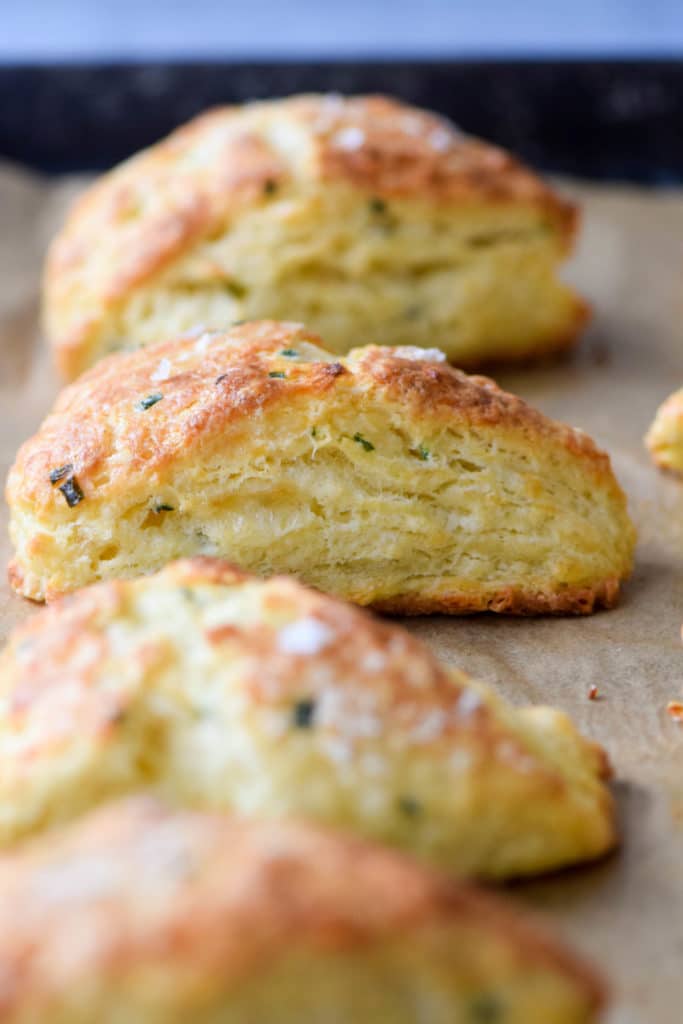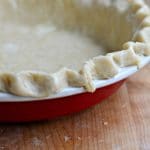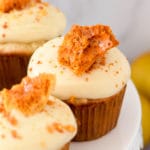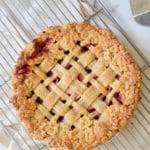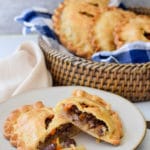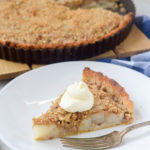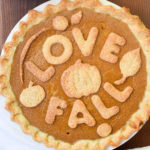For a savory breakfast treat or to accompany a hearty soup at dinner, it is hard to beat these flaky, buttery cheddar herb scones!
I’ve been a little obsessed with baking scones lately. I suspect that the origin of my obsession is the closing of a favorite neighborhood cafe that made the best scones I have ever tasted. Huge, flaky and studded with fruit, these scones had such a devoted following that the cafe wouldn’t sell more than four at a time lest some greedy customer try to make off with the whole batch. I even took renowned baking blogger Irvin Lin of Eat the Love to this cafe to see if he could figure out how to reverse-engineer the scones.
But alas, Blue Max Cafe has had a “closed for remodeling” sign on its door for months now and I am started to lose hope that it will ever re-open. So, I have had to resort to baking scones at home. The good news is, scones are a relatively quick and easy baking project. While sweet scones are really best for breakfast, brunch and perhaps afternoon tea, savory scones can do all that and more.
A savory scone is more akin to a biscuit or a quick bread and would not be out of place on your dinner table. As an example, on a recent chilly night, I made potato leek soup for dinner and served a batch of these cheddar-herb scones on the side. They helped make the soup feel like more of a meal. And then, the leftovers made a fine breakfast the next morning!
My approach to scones draws heavily on this master scone recipe from Sally’s Baking Addiction. Her tip about chilling the scones before baking to prevent them from spreading in the oven was a revelation and finally allowed me to achieve the pretty triangles you see above.
Many scone recipes, this one included, call for you to grate a stick frozen butter and work it into the dry ingredients. This is a common technique in biscuit-making as well. The idea is that frozen butter will not melt into the dry ingredients while butter that is only cold from the fridge might. Those bits of frozen butter won’t melt until they hit the heat of the oven where they will release steam and create pockets of air resulting in a flaky texture.
Okay, that explains why you use frozen butter, but why not just cut it into pieces? Why grate it? (I feel the need to explain the importance of this technique because, to be honest, grating frozen butter is a pain and I have a big scrape on my knuckle to prove it.) Well, grating the frozen butter creates small pieces that mix into the dry ingredients more quickly than larger pieces would and this allows you to handle the dough less. The less you handle the dough, the more tender and flaky the final result will be.
So, bite the bullet and grate the frozen butter. This is by far the worst part of the scone-making process, and once you taste your flaky, cheesy scones hot out of the oven, you’ll forget all about how annoying it was to grate frozen butter until you look down and see the big scrape on your knuckle.
A few additional notes:
- Keep all of the ingredients as cold as possible, including the buttermilk and the egg. Use them straight out of the fridge.
- If you don’t have buttermilk on hand, you can use heavy cream instead. If you do so, omit the baking soda and use 2 1/2 tsp of baking powder. If you have buttermilk but no cream, you can brush the tops of the scones with buttermilk instead.
- For herbs, I recommend either chives or dill depending on your family’s preference.
What is your favorite type of scone? Sweet or savory?
Ingredients
- 2 cups all-purpose flour
- 2 TB sugar
- 1 tsp salt
- 2 tsp baking powder
- 1/4 tsp baking soda
- 1/2 cup buttermilk
- 1 egg
- 4 oz. (1 stick) butter, frozen
- 4 oz. extra-sharp cheddar, such as Cabot Seriously Sharp Cheddar, grated
- 1/4 cup finely chopped herbs, such as chives or dill
- 1 TB milk
- 1 TB cream
- Flaky sea salt for finishing
Instructions
- Whisk together the flour, sugar, salt, baking powder and soda in a large bowl. Chill while you prepare the remaining ingredients.
- Beat the buttermilk and egg together and set aside.
- Grate the frozen butter on the side of the box grater with the largest holes. Add the grated butter to the dry ingredients and, using your fingers, work in the butter until the mixture comes together and resembles gravel or coarse crumbs.
- Add the wet ingredients and stir with a fork. Add the cheese and herbs and stir to combine. Gather the dough with your hands and knead just until combined.
- Turn the dough out onto a floured board and pat into a rectangle. Fold the dough in half. Turn and pat into a rectangle again. Fold in half again.
- Pat or roll dough into an 8-inch circle and cut into 8 wedges.
- Place the wedges on a baking sheet lined with parchment paper and chill scones for at least 15 minutes.
- Preheat oven to 425 and beat together the milk and cream.
- Brush the tops of the chilled scones with the milk-cream mixture and sprinkle with flaky sea salt.
- Bake until golden brown, approximately 20 minutes. Cool on a wire rack.
